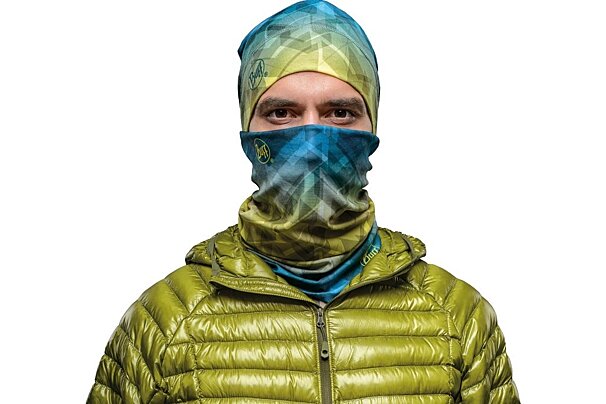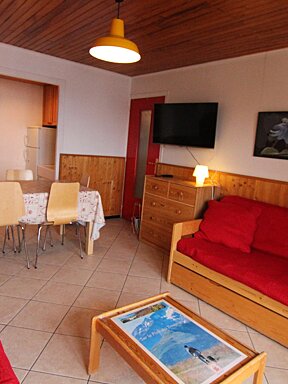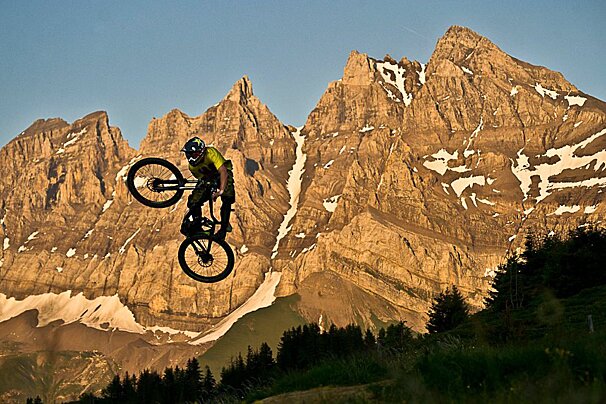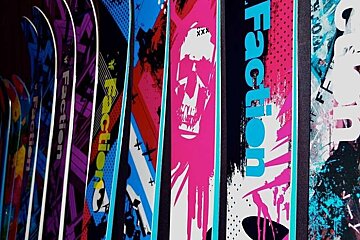
© Beanie's
Skis and equipment in Alpe d'Huez
Discover the top Alpe d'Huez skis and equipment options
So you've begged, borrowed or rented your equipment up until now, but it's time to bite the bullet and buy some gear of your own. We know that choosing a new pair of boots, ski and poles, from the plethora of choice can be quite a complex and daunting task. Here's our guide to help you cross the Rubicon.
Over the past 60 years or so, skiing equipment has moved on in leaps and bounds. In the 1930's, alpine skiing made the transition from exotic leisure pursuit for the select few, to a worldwide participant sport. At that time skis consisted of long wooden planks with 'bear trap' bindings. Today you’re more likely to see such skis as decorative antiques hanging on the walls of Savoyard restaurants and chalets to add a bit of rustic charm.
In the 1960's came fiberglass and it was at that point that the traditional ski began to change. The 1980's were dominated by the infamous 'pencil skis' that were accompanied by the good old rear entry boots and one-piece ski suits with which designers creatively brought bright colour to the ski slopes. The more fluorescent the better. Whilst you may still see the occasional fluorescent number and pair of pencil skis on the slopes (or at a bad taste theme party), those who continue to persevere with them should know that today this rather dated equipment is playing havoc with your skiing potential.
The 1990's saw the introduction of carving skis which opened up the market for ski design all based on a similar carving system. In the current market, the right pair of skis should almost feel like an extension to your boots and should suit your style, ability, weight and skiing aggressiveness. The ‘wrong’ pair of skis can result in your legs becoming wholly uncooperative machines that have the potential to cause serious injury.

Boots
Boots are the first thing to buy as technically they have the most influence on your ability and can be very painful if ill-fitting. If you have unusual sized or shaped feet then it may be worth buying them early on in your 'career' as well as splashing out on customised foot beds. We would always recommend new boots as opposed to second-hand boots - once used a couple of times they tend to mould to the previous users' feet, can lack padding and therefore warmth and comfort.
It is better to buy in the resort. A ski boot needs to be skied before any problems arise, leading to potential difficulties for those who purchase boots at home. In resort, any problems can be ironed out during your stay at no extra cost. A professional boot fitter should single out the correct shape and style of boot to suit your skiing level and foot shape. A professionally made foot bed, which stabilises the foot within the boot, enhances transmission of your energy onto the ski’s edge for optimum carving. Remember that you should wear thin ski socks in your well-fitting boots as it is blood flow around your body which keeps you warm, not thick socks. World-cup skiers even wear stockings or nothing to give them closer contact to the boot.
Towards the end of March/beginning of April, a number of local resort ski and snowboard shops will have good end of season sales offering good discounts on the price of the season’s skis and snowboards.
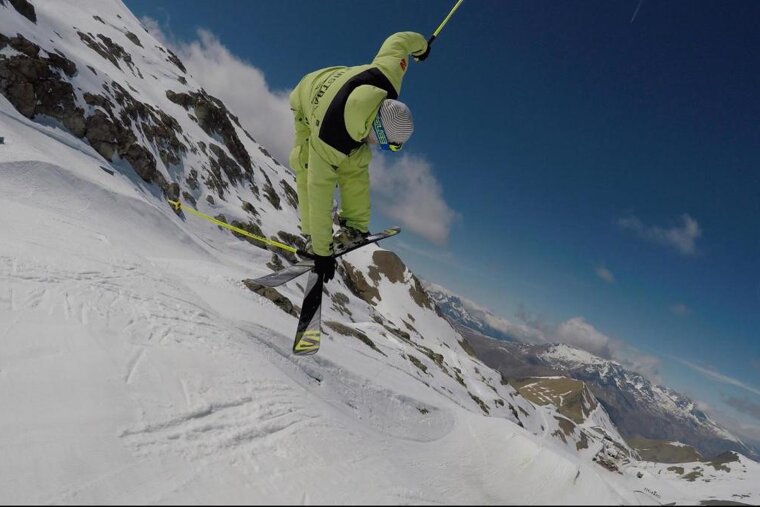
Skis
The local shops will offer a wide range of gear, with different skis to choose from depending on your ability, plus a couple of other factors such as gender, height, weight and age. In recent years the equipment on offer has hugely diversified, catering to an assortment of terrains and personal preference. Most shops will stock a selection of slope, all-mountain, freeride or freestyle skis as well as race skis, mini skis, touring skis, and cross-country skis.
| Skis | |
|---|---|
| Type | Description |
| All Mountain skis | The most versatile, designed to ride all types of terrain. They have a width between 85-105mm, the wider skis more suited to powder, the narrower geared towards pistes. Most of them have rocker profiles with camber underfoot to ensure stability and edge hold on-piste, but also float on deeper snow. These are the type of skis you should buy if you only want one pair to cruise the whole mountain. |
| Freestyle skis |
The most obvious place to see freestyle skiing in action is in the park, but freestyle can be practised anywhere. These skis are designed to be very playful and light, offering a soft flex perfect to turn, spin and butter, with rocker tips and tails to avoid catching the edge. Slightly shorter and wider than normal skis, usually "twin-tipped", so that they can be ridden backwards as easily as forwards.
|
| Race & Slalom skis | Skis suited for adrenaline junkies and carving pros with lots of experience. They have pronounced carving shapes and are usually quite long so that riders can make sharp turns and get lots of speed without losing stability. |
| Powder skis | Powder (or freeride) skis are ideal to ride deep powder. They are long, wide, and feature a heavy rocker profile which allows them to float effortlessly on soft snow. Wider skis 'surf' easily over the snow, narrower ones offer more versatility, being usable on-piste. |

Testing your new gear
The reasons for buying in resort are two-fold. You can return for little tweaks once you've had a few hours in your new boots or on your new skis, plus some shops also have dedicated Test Centres, offering test days for equipment which means you can try before you buy.
Once you have found a reputable Test Centre shop, set aside a whole day, choosing a good weather day with good visibility, ideally at the beginning of your holiday, and try out some models back-to-back on the same slopes. Be honest with the shop about your skiing level and budget, and try to narrow your choice to three models - any more would be quite confusing.
The price of the test is usually deducted from the final price of your purchase.

Maintenance
Once you own your own equipment you will need to take care of it to ensure it lasts, and a good service can make all the difference between a good and bad day's skiing.
Regular servicing usually includes a deep clean of the skis, edge tuning and base waxing, repair of any holes and scratches on the base - all helping keep them like new for longer. Sharp edges and a structured, waxed base improves turns, speed and control. Waxing helps prevent water from getting into the core.
Although you can maintain your skis at home, it takes quite a bit of gear and know how to get it right. The simplest way is to drop them into a good repair shop. Many of the local shops in resort will be able to do an overnight service before you hit the slopes, giving professional advice on what needs doing. Some skiers also advocate a thick coat of 'storage' wax after each holiday to protect them from drying out, but it's not essential, as long as your skis get a fresh wax before your next ski holiday.
More inspiration...
If you can't make up your mind, hire your skis and find out which ones suit your style. You will also be able to check out the latest innovations in skiing gear.












